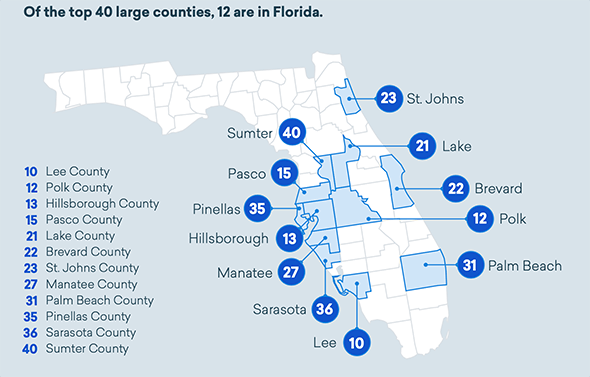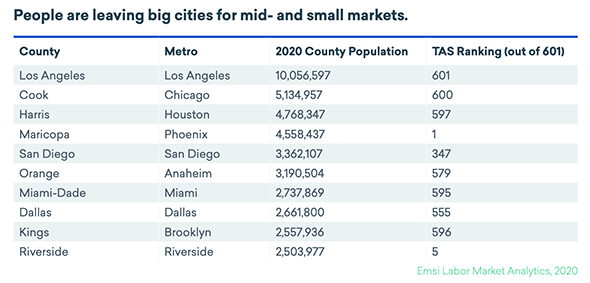One impact of the coronavirus has been to accelerate some trends that were already present in the marketplace beforehand. One of these has been the accelerating flow of people into new talent magnet communities and the relative stagnation of some of the larger, established coastal cities.
This is evident in the new Talent Attraction Scorecard 2020 from EMSI, which largely draws on data up through 2019. They find states like Texas, Florida, and Arizona having many of the most robust talent attraction markets as ranked based on a basket of measuring including migration, job growth, and new job openings.
Among counties with a population greater than 100,000, Maricopa, AZ (Phoenix) and Clark, NV (Las Vegas) finished at the top. There were four Texas suburban counties in the top 10, and there were 12 counties in Florida in the top 40.

Many of the winners were mid-sized, suburban counties, though some more urban counties like Fulton, GA (Atlanta) have surged in the rankings.

Again, this is based on pre-coronavirus data. It confirms that the performance of America’s largest superstar city markets had fallen off towards the end of the decade. With the economic and demographic fallout from the coronavirus hitting these markets hard, these places look likely to stay at the bottom of the charts for at least the near-term future.
Aaron M. Renn is an opinion-leading urban analyst, consultant, speaker and writer on a mission to help America’s cities and people thrive and find real success in the 21st century. He focuses on urban, economic development and infrastructure policy in the greater American Midwest. He also regularly contributes to and is cited by national and global media outlets, and his work has appeared in many publications, including the The Guardian, The New York Times and The Washington Post.













pattern
What are the characteristics or amenities that these dispersed growth nodes have in common?